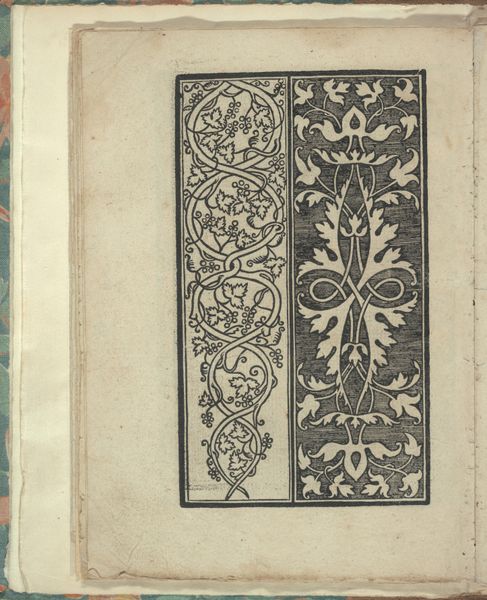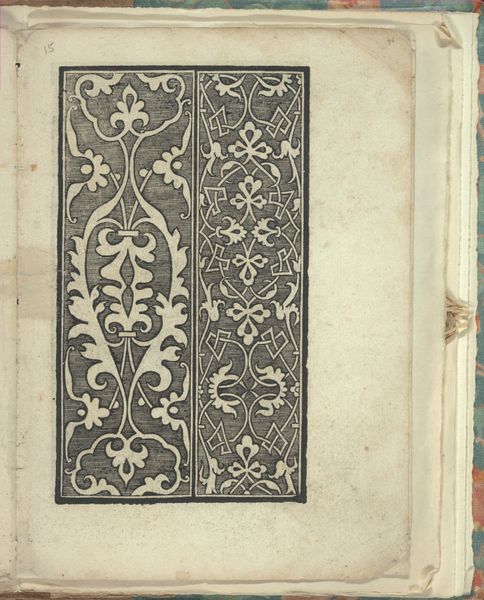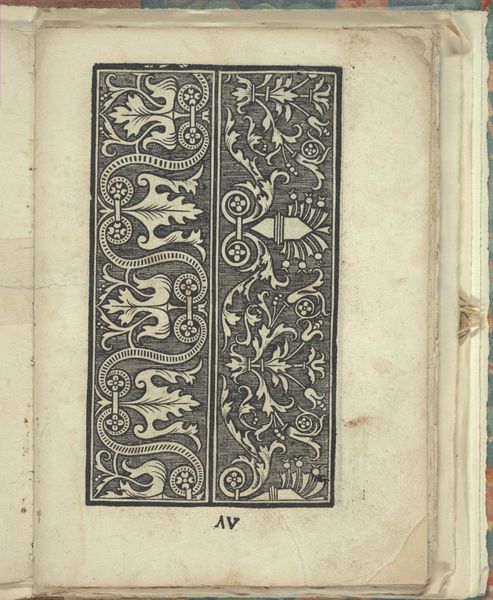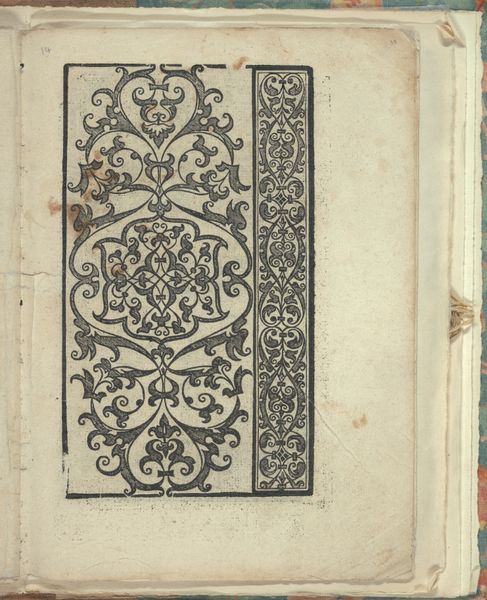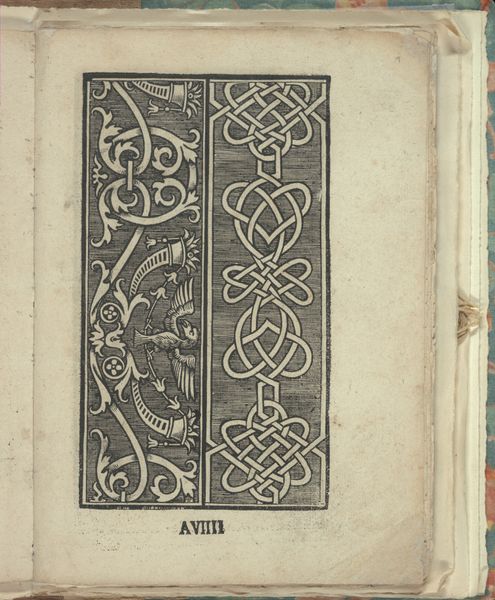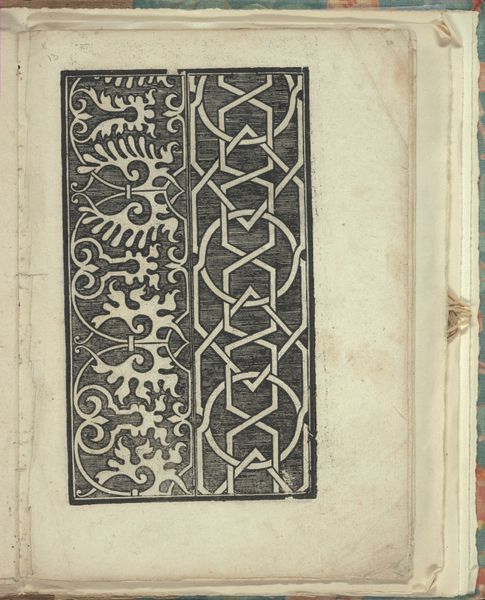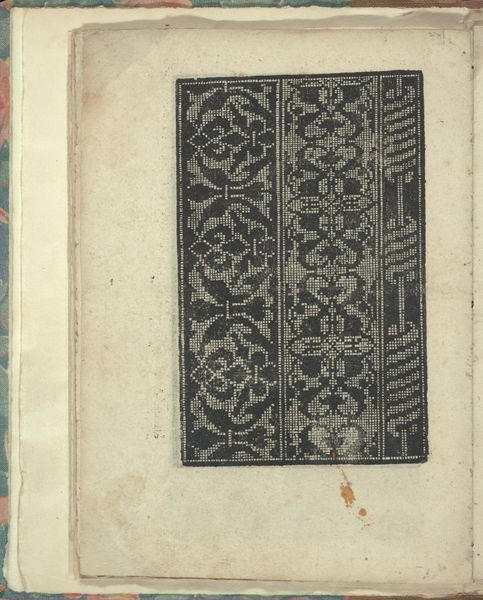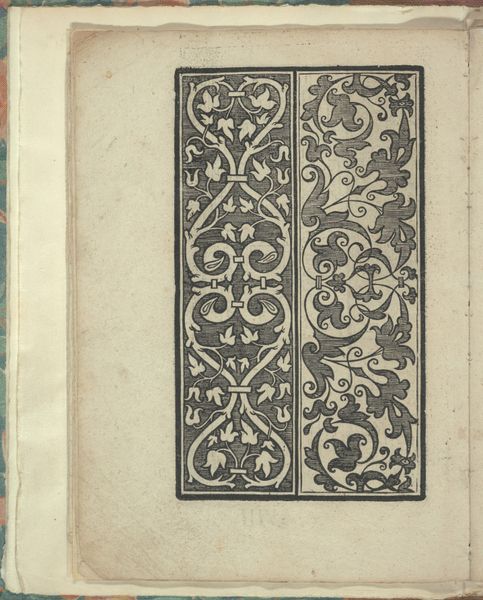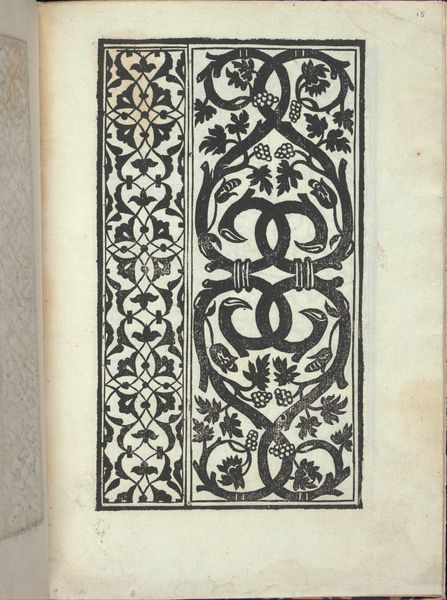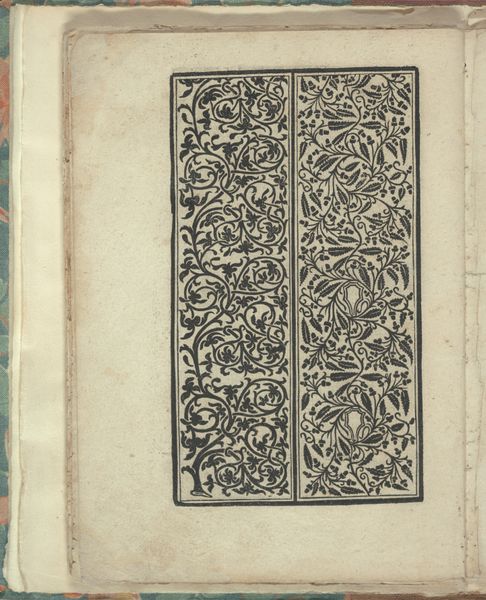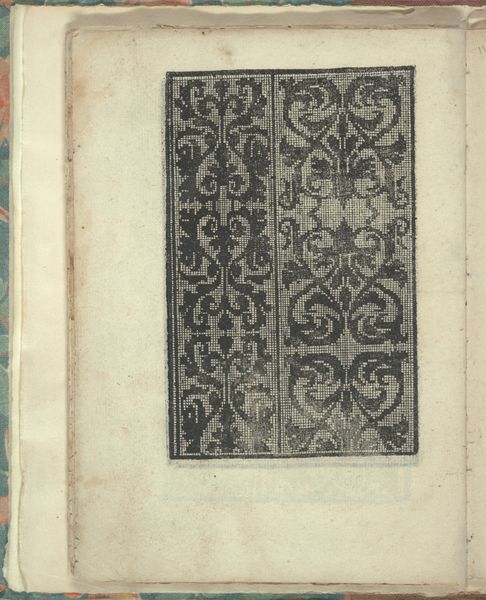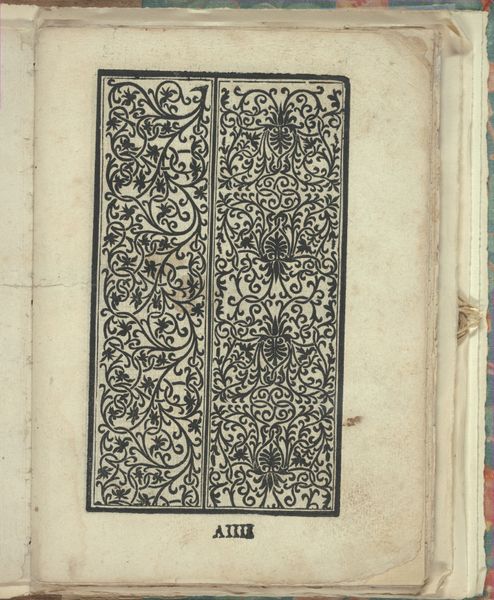
Opera Nova Universali intitulata Corona di racammi, page 30 (recto) 1530
0:00
0:00
drawing, print
#
drawing
# print
#
book
#
form
#
11_renaissance
#
geometric
#
line
#
italian-renaissance
Dimensions: Overall: 8 7/8 x 6 7/8 in. (22.5 x 17.5 cm)
Copyright: Public Domain
Curator: This delicate drawing is from a 1530 edition of "Opera Nova Universali intitulata Corona di racammi," a design book printed by Giovanni Andrea Vavassore. What strikes you first about this particular page? Editor: The stark contrast. It’s like looking at an elaborate wrought-iron gate – formal yet teeming with hidden vitality. I notice that the image relies so heavily on the stark juxtaposition between black and white. Curator: Precisely! These pattern books served as vital tools for artisans. Vavassore was shrewd; printmaking allowed the wide dispersal of intricate designs to workshops throughout Europe. It democratized access to design, influencing the labor of countless embroiderers and lace makers. We must acknowledge the hands that transformed these linear ideas into tactile realities. Editor: The patterns do seem symbolic, don't they? I'm drawn to the tendrils and repeated grape motifs – Bacchus, perhaps, and the ideas of abundance and celebration, neatly organized within the grid. This imagery, though, seems less a raw expression of bacchanalian revelry and more of a carefully constructed allusion to those motifs. Curator: It speaks to how printed design altered craft traditions. Individual interpretation met a set template, impacting workshop practices, consumption habits, and material availability across different social groups, leading to a more consistent and codified visual language. Editor: But is there a tension between control and imagination in these images? They feel like seeds, each with the potential to sprout into something unforeseen. Perhaps that’s why these emblems endured – their malleability made them culturally "sticky." Curator: The durability of pattern books underlines the Renaissance relationship with skill and commerce. These templates moved fluidly, adaptable to textiles or ceramics or any number of surface treatments. Editor: I find myself wondering, were these motifs regarded as "new" in their time, or did they knowingly play with older archetypes? Curator: The blend of tradition and innovation encapsulates the dynamism of Renaissance material culture. These pattern books reveal to us a rich image of the period's labor, process and design values. Editor: Ultimately, considering the symbolic heft alongside the mechanics of their reproduction reframes them as conduits of collective cultural dreams. Thank you; my perspective has expanded in appreciation.
Comments
No comments
Be the first to comment and join the conversation on the ultimate creative platform.

